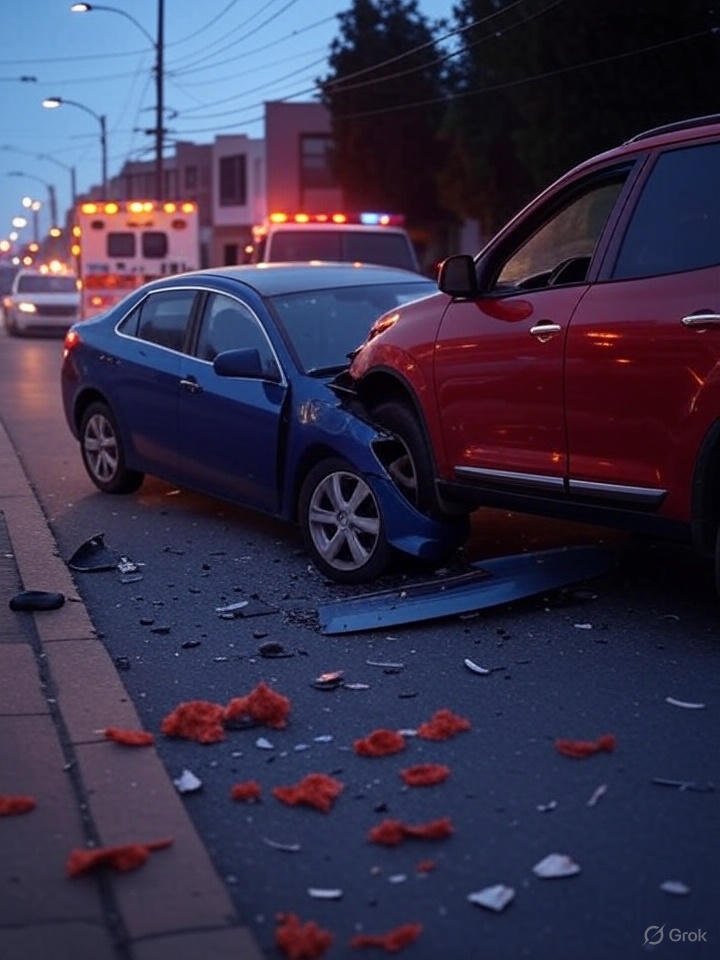Contributory Negligence And The States Who Use it
In most U.S. states, if you’re partially at fault in an accident, you can still recover damages—just reduced by your percentage of fault. But in a small handful of states, the rules are far stricter. Under the doctrine of pure contributory negligence, if you’re found even 1% at fault, you may be completely barred from receiving any compensation.
This rule is still enforced in only four states and the District of Columbia. If you live in or are involved in an accident in one of these places, it’s critical to understand how it may impact your personal injury or car insurance claim.
What Is Pure Contributory Negligence?
Pure contributory negligence is a legal principle that prevents an injured party from recovering damages if they’re found to have contributed in any way to their own injury—even slightly. It’s considered one of the harshest fault doctrines in U.S. tort law and is a major departure from the more common systems used elsewhere.
This doctrine dates back to early English common law and was adopted by many U.S. states in the 19th century. Over time, most have moved to more forgiving systems, but a few still maintain this strict rule.
Real-World Impact on Personal Injury Claims
In contributory negligence states, even minimal fault—such as jaywalking, speeding slightly, or being distracted—could result in a total denial of compensation. For example, if you’re hit by a speeding driver but were texting while walking across the street, a court could rule that you contributed to the accident and deny your claim entirely.
This system has come under criticism for being overly rigid and unfair to victims, especially in cases where the plaintiff’s fault is minor. As a result, there have been repeated calls for reform in these states.
Which States Still Use Pure Contributory Negligence?
As of 2025, only these five jurisdictions apply pure contributory negligence Alabama, Maryland, North Carolina, Virginia, and Washington, D.C. Let’s look at how each state handles this legal rule:
🔹 Alabama
Alabama enforces contributory negligence strictly. In Ex parte Essary, the state Supreme Court reaffirmed that any contributory fault—even slight—bars a plaintiff from recovery. This applies to both vehicle accidents and general negligence claims.
🔹 Maryland
Maryland has upheld the doctrine in numerous cases, including Owings v. State, where the court clarified the state’s unwavering application of contributory negligence. Even small missteps on the part of a plaintiff can end a case before it begins.
🔹 North Carolina
North Carolina courts have long followed the pure contributory negligence model. In Hoffman v. R.L. Riddle, the state Supreme Court ruled that even minor fault could be a total bar to recovery, affirming the tough stance on plaintiff responsibility.
🔹 Virginia
Virginia courts have upheld contributory negligence in multiple rulings. In Hoffman v. L&S Interiors, a plaintiff was denied recovery due to partial fault—despite overwhelming negligence by the defendant. The state continues to support this strict model.
🔹 Washington, D.C.
Although D.C. retains pure contributory negligence in general tort law, there’s a limited exception for vulnerable road users like cyclists and pedestrians under the “Vulnerable User Recovery Act.” Outside of those scenarios, the traditional rule still applies.
Arguments For and Against the Doctrine
✔️ Arguments in Favor
- Promotes personal responsibility: Encourages all parties to act carefully and avoid negligence.
- Clear liability standards: Establishes firm rules about who is responsible in an accident.
- Reduces frivolous lawsuits: Bars claims from individuals who contributed to their own injury.
❌ Arguments Against
- Overly harsh on victims: Denies compensation even for small mistakes.
- Outdated: Most states have moved toward comparative systems that balance fairness and responsibility.
- Discourages valid claims: Victims may be discouraged from pursuing legitimate claims due to the risk of total denial.
Will This Ever Change?
Reform efforts have been introduced in several contributory negligence states, but progress has been slow. The legal and insurance communities remain divided on whether the doctrine should be abolished or preserved.
For now, anyone living in or dealing with claims in Alabama, Maryland, North Carolina, Virginia, or Washington, D.C., should understand how this strict rule could affect their rights after an accident. Even minor mistakes—like failing to use a crosswalk or momentary distraction—can cost you the ability to recover damages.
Tip: If you’re involved in an accident in one of these jurisdictions, it’s wise to consult with an attorney early, even for minor injuries. Pure contributory negligence laws leave little room for error.
Frequently Asked Questions
❓ What is the difference between pure contributory and comparative negligence?
In pure contributory negligence states, any fault by the injured party bars recovery. In comparative negligence states, the injured party can still recover damages—just reduced by their percentage of fault.
❓ What if I’m only 1% at fault in a contributory negligence state?
You could still be denied all compensation. These states apply an all-or-nothing rule.
❓ Why haven’t these states updated their laws?
Many legal traditions are slow to change. Some lawmakers and courts believe the doctrine enforces personal accountability, while others push for reform toward more flexible systems.

